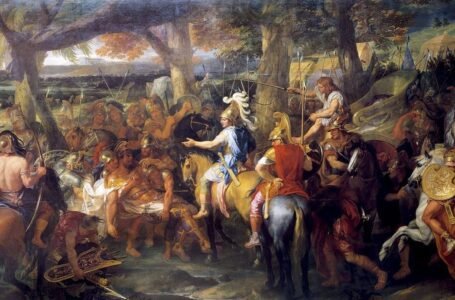The Role of Indian Railways in Freedom Struggle and Economic Growth

Indian Railways is much more than just a mode of transportation; it is a story woven into the very fabric of the nation’s history. From its humble beginnings in 1853 to its critical role in the fight for independence and its transformation into the economic backbone of independent India, the railways have been a silent yet powerful witness to the country’s journey. Let us explore its profound impact—one that shaped not just the political narrative of the freedom struggle but also laid the groundwork for India’s economic growth.
A Colonial Inception: Serving an Empire
The story of Indian Railways begins under colonial rule when the first passenger train ran between Mumbai and Thane on April 16, 1853. At the time, the British introduced railways not out of benevolence but as a means to strengthen their control over India. Railways facilitated the movement of raw materials like cotton, jute, and tea from India’s interiors to its ports, ensuring a steady supply of resources for British industries. Simultaneously, finished goods from Britain were distributed across the subcontinent, stifling local industries.
But the British underestimated the unintended consequences of their grand project. The railway network, while designed to exploit, became a tool for unity. It connected distant regions, brought people closer, and sowed the seeds of a collective national consciousness.
Railways and the Freedom Struggle
Gandhi and the “Third-Class Compartment”
One of the most iconic images associated with Indian Railways during the freedom struggle is that of Mahatma Gandhi traveling in third-class compartments. Gandhi’s train journeys were not merely about reaching destinations; they were about connecting with people. Whether he was traveling during the Champaran Satyagraha or en route to the Dandi March, Gandhi used these journeys to interact with ordinary Indians, listen to their grievances, and unite them under a common cause.
A Medium for Ideas
The railways became a vehicle not just for people but for ideas. Newspapers, pamphlets, and revolutionary literature found their way to the farthest corners of the country via trains. This dissemination of information was crucial in galvanizing public opinion against colonial rule. Leaders like Bal Gangadhar Tilak and Subhas Chandra Bose used the network to propagate their ideas and mobilize support.
Acts of Resistance
The Quit India Movement of 1942 saw the railways becoming a symbol of defiance. Freedom fighters targeted railway tracks, disrupted services, and sabotaged trains to cripple the British administration. One notable example was the Kakori Train Robbery of 1925, where revolutionaries like Ram Prasad Bismil looted government funds being transported by train. These acts of resistance showcased the strategic importance of railways in the fight for freedom.
The Tragedy of Partition
The Partition of 1947 brought with it unprecedented horrors, and the railways were at the center of this tragedy. Trains carried millions of refugees fleeing communal violence, but they also became sites of bloodshed. Entire trains would arrive at stations filled with massacred passengers. Despite the heartbreak, the railways played an essential role in helping people rebuild their lives by facilitating migration on an unimaginable scale
Indian Railways Post-Independence: A New Chapter
After 1947, Indian Railways was no longer a tool of exploitation but a pillar of nation-building. Its role evolved to address the socio-economic challenges of a newly independent country.
Building Bridges Between Rural and Urban India
One of the most significant contributions of Indian Railways has been connecting rural areas with urban centers. Farmers now had access to larger markets, where they could sell their produce at better prices. Conversely, essential goods like fertilizers, machinery, and consumer products reached rural areas, fostering agricultural and industrial growth.
Driving Industrial Development
Railways have been the backbone of India’s industrial economy. Industries like coal, steel, and cement depend heavily on the efficient transport provided by trains. The introduction of freight corridors has further streamlined the supply chain, reducing costs and boosting productivity.
Employment Generation
Indian Railways is one of the largest employers in the world, providing jobs to millions of people. From engineers and stationmasters to ticket collectors and track maintenance workers, the railways have created opportunities across all skill levels. This employment has been vital in reducing poverty and driving economic stability.
Connecting Hearts and Minds
Beyond economics, the railways have played a cultural role in uniting India. Pilgrims travel to religious sites, families visit distant relatives, and tourists explore the country’s diverse landscapes—all made possible by the extensive railway network.
Modernization and Sustainability
The post-independence era has also seen Indian Railways embracing modernization. The transition from steam to diesel and electric locomotives marked a significant leap forward. Today, India boasts high-speed trains like the Vande Bharat Express, reflecting the country’s aspirations for technological advancement.
Sustainability has also become a priority. Efforts like electrification, the use of solar panels at stations, and the introduction of bio-toilets demonstrate a commitment to reducing the carbon footprint of rail operations.
Challenges and Opportunities
Aging Infrastructure
Many parts of the railway network still operate on outdated infrastructure, leading to inefficiencies and safety concerns. Upgrading tracks, bridges, and signaling systems is critical for ensuring reliability.
Financial Strain
Keeping passenger fares affordable while managing operating costs is a delicate balancing act. Public-private partnerships could provide the financial infusion needed for modernization.
Expanding Connectivity
Regions like the Northeast require greater railway connectivity to unlock their economic potential. The government’s focus on expanding the network in these areas is a step in the right direction.
Economic Contributions of Indian Railways
Boosting Trade
Railways have significantly reduced transportation costs, making goods more affordable and competitive. Dedicated freight corridors enhance India’s ability to participate in global trade by ensuring faster and more efficient transport.
Urbanization and Development
Railways have been a catalyst for urbanization. Cities with major railway hubs have seen significant economic growth, with improved access to jobs, education, and healthcare.
Conclusion
Indian Railways is not just an engine of economic progress; it is a symbol of India’s unity and resilience. From its role in the freedom struggle to its contributions to modern development, the railways have been a constant force in shaping the nation’s destiny. As India moves forward, investing in this vital infrastructure will ensure that the railways continue to drive growth, connect communities, and uphold the spirit of a united India.


